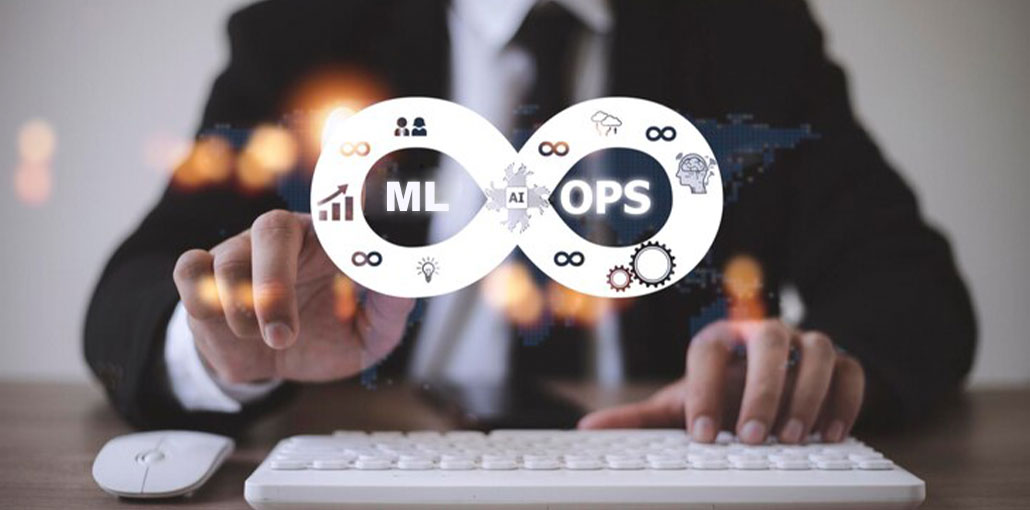AI and Machine Learning (ML) are everywhere. Amazon uses machine learning to recommend products. TGI Fridays made a virtual bartender using machine learning. Machine learning is used by car manufacturers to make cars drive themselves. This can be a long and painful process.
Use cases are limitless. The ML algorithms are not easy to develop, maintain or deploy. You need to have machine-learning operations (MLOps).
MLOps can be a difficult beast by itself. Even deploying a good MLOps Framework blindly can lead to chaos. You must plan the way that you will set up MLOps. An MLOps plan is essential.
What is MLOps?
Take a minute to read What is MLOps if you are new to MLOps, or machine learning generally. article. Both concepts are explained in simple terms and we show how businesses use them.
Machine learning models require specialized development and data preparation. They also need evaluation, maintenance, and evaluation. It’s not easy to get ML models that provide reliable business value. This requires continuous collaboration between machine learning engineers and software developers, as well as data specialists.
This new collaboration is complex and causes delays, friction, and errors. MLOps aims to change that. The tools, procedures, and workflows that businesses use to integrate reliable ML in software are the most important.
MLOps and DevOps
MLOps and DevOps are not the exact same thing. DevOps aims to improve the software development process. It allows software engineers and operations staff to work together in order to develop, deploy and update software.
MLOps is a different approach with a more complicated scope. The ML models are capable of incredible feats, but to communicate with the outside world they require traditional software. Imagine a giant human-piloted robot. The traditional software is the robotic pilot and the ML model is its underlying model.
The pilot must train, learn, study, and then train again. The robot must be constructed, tuned, and upgraded to include laser swords and cooler guns. The pilot trainers as well as the robot builders need to work together closely. Imagine the robot team replacing the Cool Sword with the Self-Destruct. This is a fantastic change. It reduces power consumption by 20%! If they forget to inform the pilot training team about this, then our rad anime mecha becomes a tragic warning tale about the importance of interdepartmental communications real quickly.
MLOps is a team of data engineers, machine-learning developers, and software engineering professionals who work together to implement machine-learning projects. Check out MLOps Motivation for a more detailed description with fewer anime references.
Also read: Top 15 DevOps Tools for Development
Key Components of MLOps Strategy
All stakeholders should have access to your MLOps Strategy. This is not a one-time process. An MLOps Strategy can and should change over time.
It should include the following:
Current Friction Points
Gather information from your team about any pain points that they are currently experiencing if your organization already uses ML models. You might come up with an MLOps plan that fixes future problems instead of current ones if you don’t have this information.
Ideal Workflow
How would the perfect MLOps solution look for your company? Do not worry about it being perfect the first time. This section will change as your team, business goals, and work scope change.
Budget
Constraints are important. You may not have unlimited funds to hire consultants and buy expensive software. You should at least know how much you can afford and what your ideal workflow will cost.
Short-Term Solutions
Put your pain points, ideal workflow, and budget together. Find the most difficult problems and then identify the best solutions. You might want to break your problem down into immediate and intermediate solutions if it is complex enough.
Long-Term Solutions
It’s unlikely that you can fix all of your problems at once. You may also be able to predict what problems will arise as you grow. Here’s where they go. Outline the pain points that you will solve in the future and how you plan to fix them. Also, outline any pain points that you see coming up.
Ownership and Team Structure
If nobody is in charge, nothing will be done. Each problem and its solution must be assigned responsibility. You may choose to distribute ownership amongst each team, depending on how complex your strategy is. Hiring an MLOps Architect can help make the process easier if you have the budget.
Timeline
Decide when you want everything to happen. This timeline should include goal dates for new tools, processes, and people. Long-term and short-term goals can be set to target quarters.
Also read: Top 10 AIOps Platforms & Tools
Manual MLOps Strategy
A manual MLOps structure has no automation. Each step of the MLOps process is done manually: data preparation, data collection, model training, deployment, etc. Manual processes may not be the best long-term solution, but they are cheap and easy. Manual processes can be a good way to address immediate issues.
Manual MLOps are subject to human error. You’ll need to repeat the manual process every time you wish to update or retrain your model if you choose to use manual processes for training and deployment. Manually monitoring model performance could miss signs of degradation. Manual processes are also slow. Every time they take a long time.
Manual MLOps reduce friction in the software, data, and ML teams. However, it falls short of some other MLOps objectives. It’s difficult to iterate after an ML model has been deployed without automation. ML models, in particular, are prone to drifting data and decay over time. Imagine a code that deliberately introduces new bugs. You would want it to be as easy as possible to fix the software and redeploy it!
Manual MLOps are like going to the car factory each time you need a new tire. The factory does a great job at building new cars but is terrible at maintaining older cars.
Use multiple models of machine learning or update them often. Manual MLOps processes can only be used when you are just starting out. You’d like to automate these processes as quickly as possible. Automated MLOps Strategy
This will be the sweet spot for many organizations. An MLOps automated strategy requires the creation of an ML pipeline. Integration of multiple software solutions can reduce the amount of manual work needed to iterate ML models.
Start by configuring Argo workflows, or NATS. These tools manage the flow from storage to Python libraries such as Pandas. These tools can run scripts to automatically ingest the data, validate it, clean it, and then split them into discrete groups.
These tools can automate the training of ML models, tracking experiments, and evaluation if data is not your main concern. This process can be linked to a trigger such as new data. TensorBoard, for example, can visualize the results of every iteration. This information allows your ML team to experiment with algorithms and hyperparameters.
Validation of ML models can be automated using similar workflow steps. You can, for example, choose to only show performance results from iterations that pass validation.
CI/CD and MLOps
A fully mature MLOps implementation will have an automated continuous integration/continuous delivery (CI/CD) pipeline. The implementation should also include components for continuous monitoring (CM), continuous training (CT), and continuous training (CT). These components are often connected through APIs.
MLOps systems can be very powerful. A previously deployed ML model might have missed a performance metric. These tools can detect the drift in real-time and notify your team. The model can then be re-trained using new data that is automatically ingested. This retraining can be performed without taking the model off production.
Problems with a full CI/CD for the MLOps pipeline are the same problems as any other complex system. It’s possible to end up with a lot of technical debt if it isn’t planned and implemented carefully. The system is made up of many interlocking parts, which makes it work well–whenever it does. For maintenance and updating, you’ll want to have system experts available. You’ll need money and time to fix expensive repairs when something breaks.
The benefits of doing it right are well worth the effort. Multiple ML models that are reproducible and reliable will provide you with value. You will also be able to maintain and deploy existing models in an efficient manner.
Ownership and Leadership
It takes a lot of effort to do MLOps correctly. Coordinating several teams! Implementing and integrating different software across disciplines! Plan and execute a crucial strategy that will last for years! You may need to assign one person the responsibility of managing all these factors. This person is called your MLOps Architect.
An MLOps architect is a valuable resource. This person is an expert in cross-team collaboration. This person helps write the strategy and answers questions from other teams. They plan new software additions and ensure that implementation moves at a steady pace. You may even require a dedicated MLOps Team as the MLOps Pipeline evolves.
Your MLOps architect may already be in your company! Promoting from within is a good option if someone has the necessary skills. Insiders are already familiar with your company’s goals, people, and workflow. Hiring an expert from outside can provide a new perspective to your team. It’s up to you to choose the best option for your team.
Sample Software
Let’s now switch gears to talk about some examples of software and pipelines.
Amazon Sagemaker, a solution designed specifically for MLOps is a popular option. Sagemaker comes with a variety of tools that are useful for many roles, including business analysts, data scientists, and ML teams.
Sagemaker offers tools at every stage of machine learning’s lifecycle. Sagemaker has tools for every stage of the machine learning lifecycle. Sagemaker is able to automatically tune ML models, and identify the most effective versions.
Amazon Sagemaker’s price is based on usage. Its cost will therefore be proportional to your requirements. There is also a try-it-free option. As is usual with AWS, the pricing details are extremely complicated. Amazon provides pricing examples that range from $0 per month to more than $300.
If Amazon is not your preferred platform, Kubeflow is a popular open-source MLOps platform. Kubeflow is MLOps tool that integrates and enhances Jupyter Tensorflow and Kubernetes. It is designed to be the orchestrator for an open-source MLOps toolset.
Kubeflow follows the classic open-source model: It’s free but you need to know what you are doing. You will be relying heavily on the community for support and development. Kubeflow can be a good choice if your team has experience with open-source complex tools. Stick with software that is paid for if you want professional support.










Leave a comment